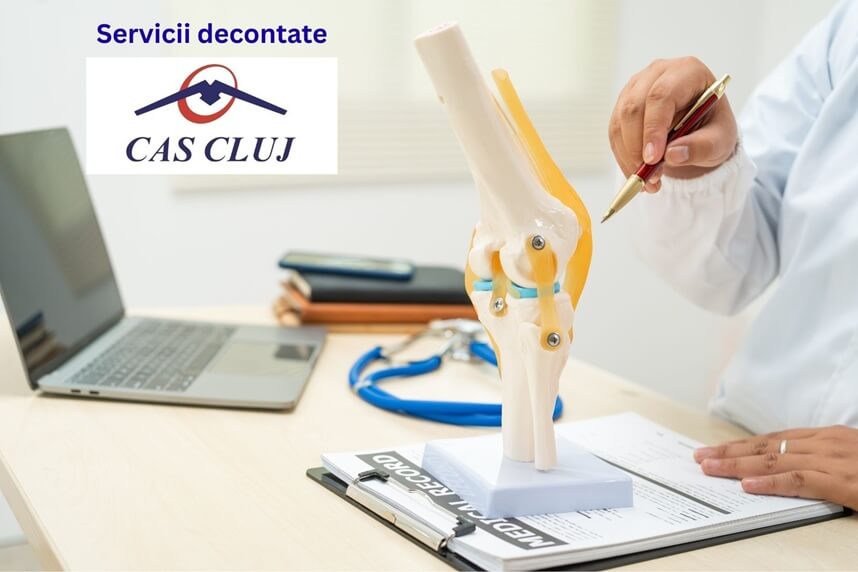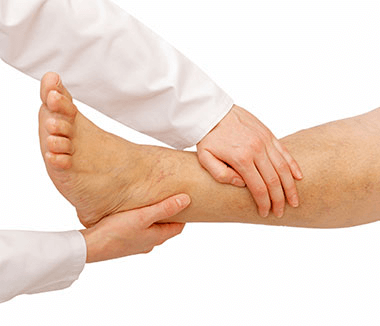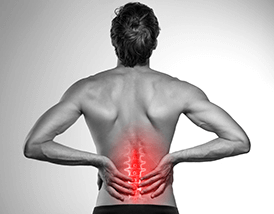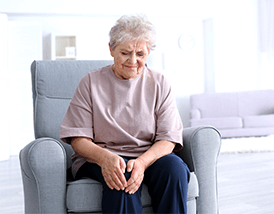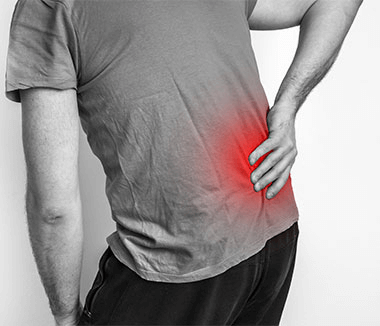Article written by: OANA TUTUIANU, Physical therapist
Actualizat: 15-06-2022 / Publicat: 26-08-2020
.jpg)
Introduction
Major depressive disorder (MDD) is a widespread psychiatric illness, characterized by a high risk of morbidity and mortality and a high level of comorbidity with several psychiatric and non-psychiatric disorders. Epidemiological studies have repeatedly indicated a high lifetime prevalence of this disease, representing 6.7% of the world's population. The MDD costs for society, in terms of personal and family suffering and health care consumption, are high. Despite advances in pharmacopeia and psychological therapies, clinicians involved in MDD management regularly face marked clinical conditions of treatment resistance. About 30% of patients with depression, fail to benefit from clinically significant benefits from currently available treatments, leading to chronic deterioration of the disease. The consequences of the disease and the limitations of the usual pharmacological and psychological strategies highlight the need to develop alternative therapeutic options.
Brain stimulation therapies have emerged as relevant alternative strategies, based on emerging knowledge about certain brain areas involved in psychiatric illness. Among these techniques, direct transcranial current stimulation (tDCS) seems to have a special promise due to its cost, ease of use, and favorable tolerability profile. tDCS has been used since the 1960s to generate changes in cortical excitability in preclinical studies and as a therapeutic tool for MDD. More recently, this technique has gained renewed interest as a practical tool for modulating cortical excitability and treating psychiatric disorders. tDCS is based on the application of a weak direct current of 1-2 mA directly on the scalp by electrodes to induce regional changes in cortical excitability, which can last up to a few hours after stimulation. Sustainable effects appear to be mediated by bidirectional changes in postsynaptic connections similar to long-term potentiation and depression, which occur through NMDA-dependent mechanisms. Due to the involvement of pathological changes in neuroplasticity in psychiatric disorders, tDCS appears to be a promising therapeutic alternative to modify such pathological plasticity. The beneficial effects of tDCS have been reported in the treatment of psychiatric diseases (mainly depression and schizophrenia) and neurological diseases, as well as in the rehabilitation of cognitive, motor, and sensory functions after a stroke. Sustainable effects appear to be mediated by bidirectional changes in postsynaptic connections similar to long-term potentiation and depression, which occur through NMDA-dependent mechanisms. Due to the involvement of pathological changes in neuroplasticity in psychiatric disorders, tDCS appears to be a promising therapeutic alternative to modify such pathological plasticity. The beneficial effects of tDCS have been reported in the treatment of psychiatric diseases (mainly depression and schizophrenia) and neurological diseases, as well as in the rehabilitation of cognitive, motor, and sensory functions after a stroke. Sustainable effects appear to be mediated by bidirectional changes in postsynaptic connections similar to long-term potentiation and depression, which occur through NMDA-dependent mechanisms. Due to the involvement of pathological changes in neuroplasticity in psychiatric disorders, tDCS appears to be a promising therapeutic alternative to modify such pathological plasticity.
Methods
To identify studies that report the effects of tDCS on depression and cognition in MDD, two authors (EH and DB) searched the Pub-med database following PRISMA recommendations. The identification of the articles was based on the following keywords: "depression", "stimulation of the direct transcranial current".
The inclusion criteria for this review were:
- publishing in English;
- inclusion of depressed patients treated with tDCS;
- a meta-analysis, randomized controlled trials (RCTs), and open-label studies; d) evaluation of depressive symptoms and/or cognition.
Working independently and in duplicate, the two reviewers examined all titles and abstracts, obtained full texts of potentially relevant papers, and read the papers to determine whether they met the inclusion criteria. Out of 381 initial references, 67 works have been preserved. We excluded seven studies exploring the effects of tDCS in healthy subjects, a review, and a protocol. Thus, we obtained data from 58 articles that met the eligibility criteria.
Technical and safety aspects of direct transcranial current stimulation
During tDCS sessions, a low-intensity constant direct current (usually 1-2 mA) is passed through the brain through electrodes wrapped in an electrode gel or sponge pockets soaked in saline. Wide variations of the amount of current provided can be observed depending on the stimulation parameters applied (ie, position and size of the electrodes, current intensity, duration, frequency, and the number of sessions). In most protocols, currents ranged from 0.5 to 2 mA and were supplied for 5-30 minutes by 25–35 cm electrodes, generating current densities of 0.28–0.8 mA / cm2. Electrode placement is usually based on the 10-20 electrode placement system to locate the area of interest. More recent studies suggest the use of an initial magnetic resonance (MRI) scan to refine the electrode position, taking into account interindividual variability. From a neurobiological point of view, tDCS is considered a neuromodulation technique, given that it does not directly induce action potentials, unlike transcranial magnetic stimulation. The polarity of the stimulation determines the type of effect; anodal stimulation induces depolarization of neuronal membranes and an increase in spontaneous neuronal burning rate, while cathodal stimulation leads to neuronal hyperpolarization and inhibition. Depending on the duration and intensity of the stimulation,
tDCS can induce mild to moderate side effects, including mild itching under the electrodes, mild headache, tingling, burning, and discomfort. Skin irritations and lesions under the electrodes have also been reported, as well as some cases of mood swings.
Effects of tDCS on symptoms
The reason for using tDCS in this indication is based on historical observations of left dorsolateral prefrontal cortex hypometabolism (dlPFC) associated with right prefrontal hyperfunction in MDD and brain plasticity dysfunction, characterized by impaired potency and long-term depression. In most protocols, the currents used were 1 or 2 mA and were applied for 30 min using two large conductive electrodes (32-35 cm2) soaked in a saline solution. The anode was usually placed over the left dlPFC, and the cathode over the contralateral supraorbital area, corresponding to F3 and FP2 according to the international 10-20 EEG system. Current direct transcranial stimulation has been proposed either alone or as an additional treatment for psychotropic medication or cognitive training programs.
Following Fregni's seminal work that produced positive results on the efficacy of five sessions of anodal tDCS applied over left dlPFC (1 mA, 10 min) in ten patients with MDD, a series of controlled studies were published. Subsequently, two ECRs performed by Boggio et al. reproduced these results. The authors observed a mean 40.4% reduction in Hamilton depression score (HDRS) after anodal tDCS score (2 mA, 20 min) compared to 10.4% after placebo stimulation in 40 patients with mild MDD up to moderate. In 2010, Loo et al. showed no superior antidepressant efficacy in ten tDCS sessions (1 mA, 20 min) compared to placebo in 40 MDD patients. However, in a second study,
In this context, in 2013, a larger study was conducted involving 120 patients with unipolar depression, who compared tDCS compared to pharmacological treatment (sertraline) and versus tDCS plus sertraline. The results showed a higher reduction in the Montgomery - Asberg Depression Rating Scale in patients who received the combined intervention (tDCS + sertraline) compared to those who received sertraline alone (mean difference 8.5 points), tDCS alone (difference average 5.9 points), or placebo (mean difference 11.5 points). More recently, these authors published the results of a non-inferiority study involving 245 patients with depression and compared active tDCS (2 mA, 30 min) to drug treatment (escitalopram) and placebo. They concluded that escitalopram was significantly superior to tDCS. Furthermore, a large-scale RCT involving 84 patients with unipolar and 36 bipolar depression reported comparable active effects (2.5 mA, 30 min, 20 sessions over four weeks) and vaguely applied tDCS over dlPFC left, suggesting that low levels of stimulation are administered in conditions of shame may be biologically active.
Studies evaluating the effectiveness of tDCS in maintenance therapy to prevent recurrence have shown that reducing treatment frequency from two to one week or a high level of pre-treatment resistance has been associated with a higher recurrence rate.
Several meta-analyses that gather available data on the antidepressant efficacy of tDCS have yielded conflicting results. Kalu et al. showed higher efficacy of active tDCS than placebo, as evidenced by a greater reduction in severity scores on the depression scales. Berlim et al. found no significant difference between active tDCS and placebo in response rates (23.3% vs. 12.4%, respectively, p = 0.11) and remission (12.2% vs. 5.4%, respectively , p = 0.22). Shiozawa et al. included seven controlled studies in their meta-analysis and showed a superiority of active tDCS over placebo in clinical response and remission, which was confirmed by Meron et al. In a meta-analysis of 10 ECRs. In a meta-analysis of individual data from 289 patients, Brunoni et al. demonstrated the superiority of active tDCS over placebo in attenuating depressive symptoms, with a response rate of 33.3% versus 19%, respectively, and a remission rate of 23.1 versus 12.7%, respectively. . The level of response was correlated with various parameters, namely, the number of sessions and the amount of energy delivered, but was inversely associated with the level of antidepressant resistance. Other variables, such as the severity of the current depressive episode, the presence of bipolar disorder, female gender or sertraline treatment, as well as pre-treatment motor retardation or better verbal fluency, have also been identified as potential predictors of a positive response. From a neurobiological point of view, the 5-HTTLPR polymorphism showed a predictive property, while the brain-derived neurotrophic factor.
![i.php?p=poza 9(3).jpg]()
The effects of tDCS on cognition
Current evidence suggests that tDCS may have an impact on cognitive functions in healthy volunteers, such as working memory, attentional performance, procedural learning, and emotional information processing. In MDD, although most studies have reported an improvement in at least some cognitive functions, which suggests a potential pro-cognitive role of tDCS, no firm conclusions could be drawn. To date, attention and working memory improvement have been reported after 1, 5, and 10 anodal tDCS sessions applied over the left DLPFC. Positive results have been observed in other cognitive areas, such as cognitive control, processing speed, or emotion recognition. TDCS Bifrontal has been shown to promote more accurate and faster responses to n-back pregnancy, exploring working memory and impeding procedural learning during the task of learning probabilistic classification in depressive states. Furthermore, several clinical cases of improvement in cognitive performance after treatment with tDCS have been reported in the context of treatment-resistant depression or post-traumatic depression. However, several RCTs applying a set of standardized cognitive tests did not experience changes related to TDCS with offline stimulation, suggesting that repeated sessions did not have cumulative effects. Beyond the variability of stimulation parameters (ie the site for stimulating or using sessions outside or online) and the impact of inter and intraindividual differences.
Parameters that influence clinical outcomes
Multiple factors are likely to alter the therapeutic effects of tDCS. Among them, stimulation parameters and clinical characteristics of the population are key contributors to the variability of its effects. Regarding MDD, there is a lack of clinical trials that explore the impact of stimulation parameters on clinical outcomes. Usually, bifrontal mounts (F3 - F8 and F3 - F4 mounts) targeting the left dlPFC are used in MDD. However, a computational modeling study suggested that other assemblies, using a frontal-extracephalic or frontal-occipital approach, could lead to greater stimulation of brain regions of critical interest, such as the anterior cingulate cortex, which may be advantageous for treating MDD. Two open-label studies observed an improvement in depressive symptoms following TDCS sessions applied over the frontal-occipital or temporal regions in a total of 18 patients and 20 sessions. Moreover, in combination with sertraline, tDCS was shown to be applied for 20 or 30 minutes to treat mild to moderate depression, and the effect of stimulation for 30 minutes was more pronounced than that of stimulation of 20 minutes. minutes. Meta-analyzes found that increasing the number of sessions or the intensity of stimulation (1 versus 2 mA) did not improve the effects of tDCS on depressive symptoms. In addition, the delay between sessions could have an impact on the effects of tDCS. For example, Alonzo et al. reported that daily tDCS induced a greater increase in cortical excitability than the second daily stimulation of the motor cortex. Another point, often neglected, is the influence of patient characteristics. Two open-label studies reported that the severity of depression was positively related to clinical improvement. Evidence from three RCTs indicated that dlPFC tDCS had lower efficacy in patients with treatment-resistant depression. Finally, a meta-analysis of data from seven RCTs showed the superiority of active tDCS over placebo in bipolar depression in terms of reducing severity scores on the depression scales in the first week of treatment. In addition to the characteristics of the ongoing episode, the effects of interindividual variables, such as anatomical differences, genetic factors, must be explored. personality, comorbidities, cognitive strategy, lifestyle, and basic state of neural activation. Also, the age at which stimulation is administered may be an essential determinant of the physiological and behavioral outcomes of TDCS. In children and adolescents, specific effects of tDCS on cortical excitability have been demonstrated. In this population, the choice of stimulation parameters, especially dose selection, requires special attention.
It should also be emphasized that the final effects of tDCS depend on the concomitant use of pharmacotherapy with other interventions, such as cognitive therapy. A synergistic therapeutic action was observed with the combination of tDCS and sertraline in MDD patients on a large-scale RCT, which compared the efficacy of tDCS, sertraline, and a combination of both. In contrast, benzodiazepines have been reported to reduce the effects of tDCS. Regarding the effects of adjunctive tDCS and cognitive control therapy, Segrave et al. showed that active tDCS along with weekly cognitive-behavioral therapy (CBT) potentiated the response to treatment, while Brunoni et al. failed to demonstrate the superiority of combined cognitive control training (CCT) and active tDCS intervention over CCT and vague tDCS. In resistant depression, an open-label study reported an improvement in depressive symptoms after 18 sessions of tDCS over six weeks, administered during cognitive-emotional training. More recently, Mayur et al. failed to demonstrate differences in response speed or cognitive performance after using tDCS in combination with electroconvulsive therapy (ECT) versus ECT alone.
Conclusions
tDCS is a promising therapeutic strategy that offers the opportunity for noninvasive modulation of cortical excitability and plasticity in psychiatric disorders. Regarding MDD, most meta-analyses found that tDCS is superior to strong stimulation, with an effect size (coefficient B = 0.35) comparable to that of repetitive transcranial magnetic stimulation (rTMS) and antidepressant drugs in primary care. This technique seems to be especially indicated for patients with a mild to severe form of MDD who do not meet the criteria for resistant depression. According to these data, a group of European experts recently proposed a level B recommendation for its use in patients with depression, treated or not with antidepressants, without resistance to treatment (minimum 10 sessions (2 mA, 20-30 min) with the anode over the left dlPFC and the cathode over the right supraorbital region). Questions remain unanswered about the optimal stimulation parameters, the effect of pregnancies given during TDCS sessions, and the possible influence of additional drugs. Moreover, the clinical profile of patients with depression who have favorable responses to tDCS needs clarification. In addition to these critical questions, promising preliminary results, the non-invasiveness of tDCS and its good tolerability support the need for further research into this technique. the effect of pregnancies given during TDCS sessions and the possible influence of additional drugs. Moreover, the clinical profile of patients with depression who have favorable responses to tDCS needs clarification. In addition to these critical questions, promising preliminary results, the non-invasiveness of tDCS and its good tolerability support the need for further research into this technique. the effect of pregnancies given during TDCS sessions and the possible influence of additional drugs. Moreover, the clinical profile of patients with depression who have favorable responses to tDCS needs clarification. In addition to these critical questions, promising preliminary results, the non-invasiveness of tDCS and its good tolerability support the need for further research into this technique.
At Centrokinetic you will find Dr. Edis Mustafa , a specialist in medical recovery, who specializes in tES therapy, treating over 200 patients, and none of them had any side effects. Dr. Mustafa did his doctorate in tES therapy, being the most experienced doctor in Romania.
Our specialist, Dr. Edis Mustafa, confidently recommends this new therapeutic approach, with exceptional personal results similar to those in various international studies published with patients treated so far.
Here you can find a detailed list of prices for transcranial electrical stimulation (tES) services.
.jpg)
.jpg)
.jpg)
.jpg)





